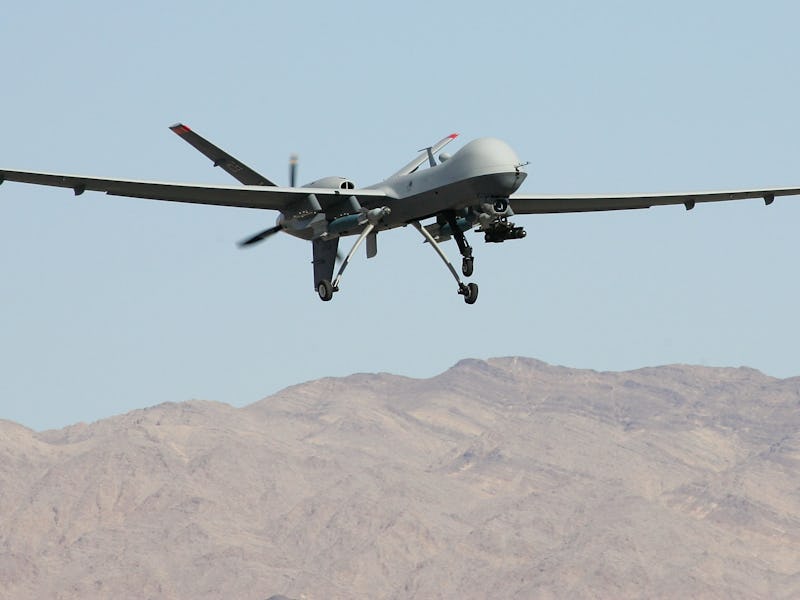Military Clears Footage of Drone Swarm-Killing Microwave Gun

A new video cleared by the Department of Defense shows a microwave gun capable of downing entire swarms of drones with just a single shot. The device is called the Phaser — yes, like the Star Trek weapons that can be set to stun or kill — and it could be the future of drone defense.
The recently declassified footage shows the U.S. Army Fires Center of Excellence at Fort Sill testing the Phaser between September 30 and October 3, 2013. The device was made by Raytheon, a defense contractor that also supplies missiles that can be used to hunt drones. The 2013 tests were meant to demonstrate that it can be used to take down multiple variations of drones, sometimes at the same time, which could be invaluable on battlefields of the future. ISIS has already used small unmanned drones to kill Kurdish fighters in Iraq, and Israeli-made suicide drones have even cropped up in other fringe conflicts like Azerbaijan’s proxy war with Armenia.
In the video, the Phaser shoots down two types of unmanned aerial vehicles (UAVs), the tier 1 and tier 2 Flanker and Tempest drones, which are commonly available on the civilian market and could carry explosive payloads or surveillance equipment.
Many details about the Phaser remain classified. The military has not revealed the device’s effective range, for example, or whether it plans to use the Phaser in operations. Still, the tests show that it won’t sit idly by as UAVs grow in popularity with other groups and governments around the world.
And it’s not enough to be able to take down a single drone, because soon they’ll start hunting in packs. DARPA announced in June that it’s developing ways to control multiple UAVs at once. This will make drone operations more efficient and less reliant on human controllers.
Any defense will also have to be able to deal with shrinking UAVs. While micro-drones aren’t yet armed, in the future they could be used for counterterrorism operations that previously would have relied on much larger devices. Laser- and missile-based defense systems could have a hard time locking on to those small UAVs.
The Phaser, or a device like it, won’t have those problems. It can be used to disrupt or damage (yes, again, like in Star Trek) anything in its path. Now the question is whether or not the military wants to devote part of its budget to bringing the Phaser to the battlefield. The Air Force and Navy are said to have more tests planned, but it’s not clear if or when these devices will leave the testing phase.